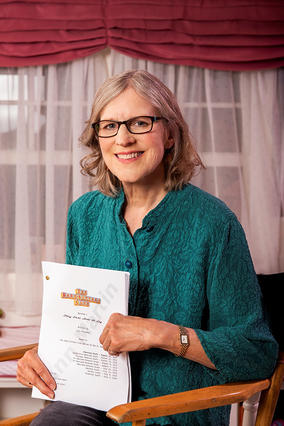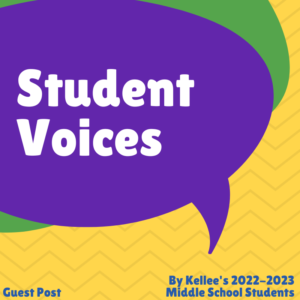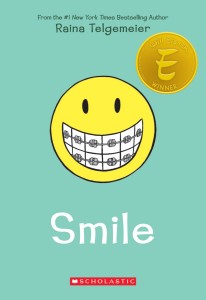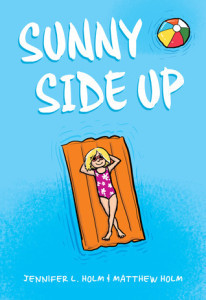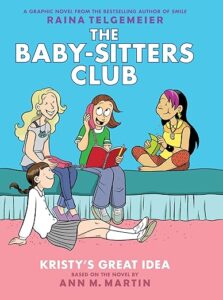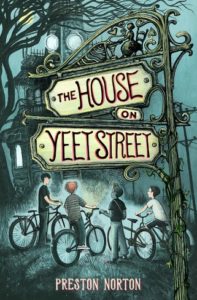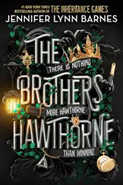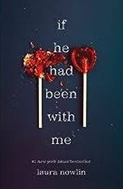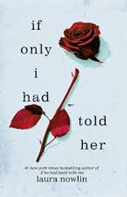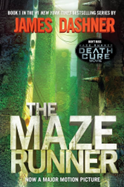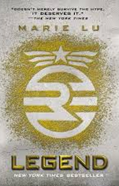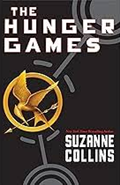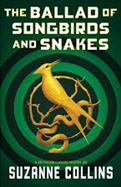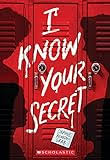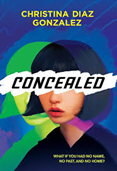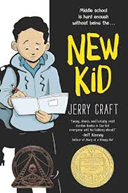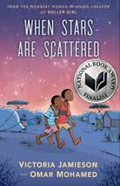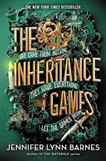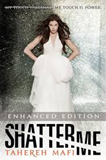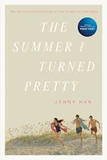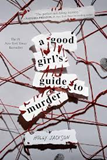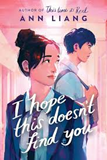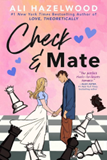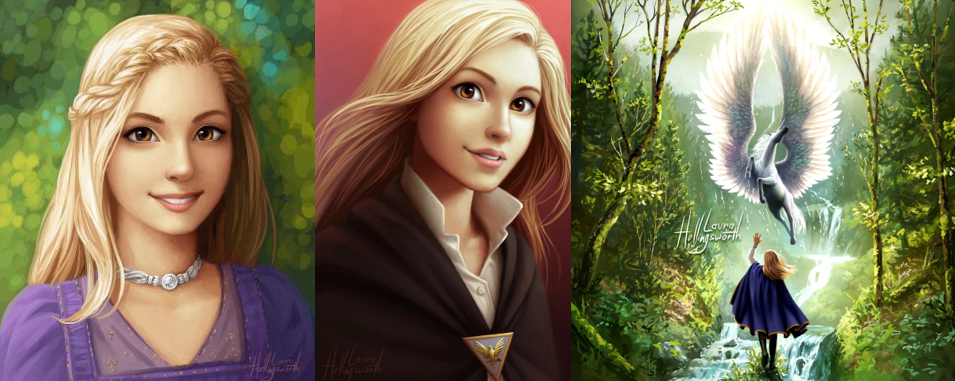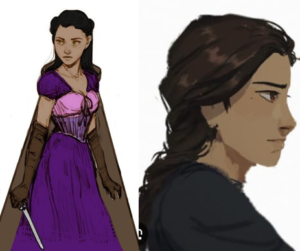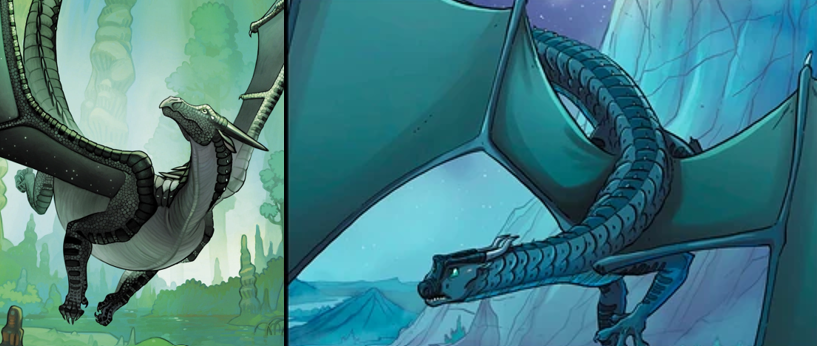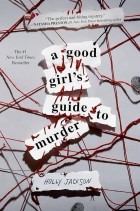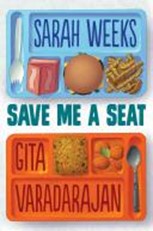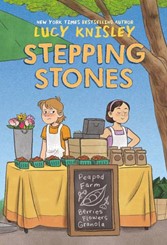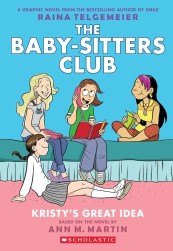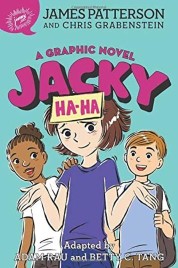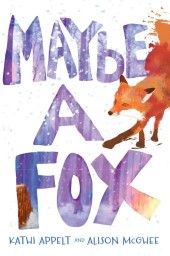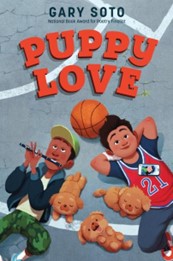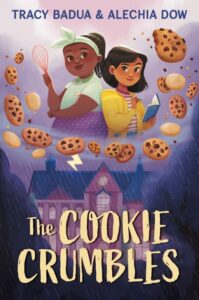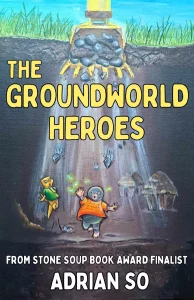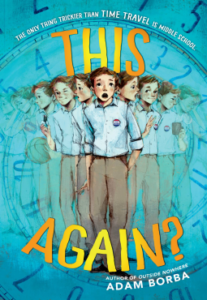Favorites and Recommendations
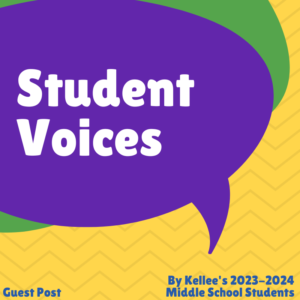
“My Top 10 Best Reads of the 23-24 School Year” by Zunaira S., 8th grade
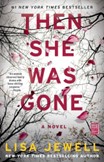
Then She Was Gone by Lisa Jewel
Then she was gone was definitely one of my best reads of 2024. Everything about this book was just amazing. After finishing the book I was left with my jaw open. The book talks about Elle, who goes missing days before taking her final exams and has no trace left of her disappearance. Laurel, Elle’s mom, is still in disbelief about Elle going missing and doesn’t believe the idea of her running away from home like others around her say. She eventually gets closure when Elle’s body is found and they finally have a proper funeral for her. While Laurel tries to move on from Elle’s death, she meets her future boyfriend, Floyd. She and Floyd go on a date and eventually get together from there. But there’s something strange about his youngest daughter, poppy. Poppy has so many features that are just like Elle’s. Laurel doesn’t think too much about this and focuses on herself and her new relationship with Floyd. Weeks go by, and Laurel is now a lot closer to both Poppy and Floyd, but she still feels like something is off. She finds out that Floyds ex-girlfriend, Poppy’s mom, was the same woman who had tutored Elle to better prepare her for her exams and was one of the last people she was seen with before her disappearance. The ending of the book had me so shocked and throughout the whole time I was reading the book, I was always so invested in the book.
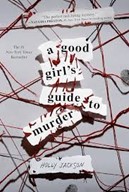
A Good Girl’s Guide to Murder by Holly Jackson
A good girl’s guide to murder was such a good thriller book and I enjoyed reading it so much. Even though it was mainly a mystery book there was still a small bit of romance between the two main characters. The book kept me on the edge of my seat every time I opened it up and couldn’t put it down. Even when I thought I knew who the killer was, I was nowhere close to who it actually was by the end of the book. Reading this kept me so invested and I always had the thought of who the killer may be in my head. I would say from my experience that this is a great book to start for someone who wants to get into mystery/thriller books but don’t know where to start.
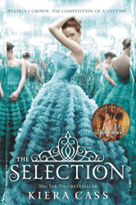
The Selection by Kiera Cass
I only recently just finished reading this book but oh my gosh was this book such a good read. The selection had the perfect balance of romance and thriller and that made the book so much more fun to read. I loved how America, the main character, had created a sort of friendship alliance with the prince and watching their friendship grow into something bigger was so entertaining to read about. Every time I picked this book up I would always get indulged into it and wouldn’t want to stop. I really do wish I had learned about this book sooner enough to have finished reading the series before the school year ended but this book was definitely worth ending the school year with.
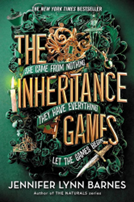
The Inheritance Games by Jennifer Lynn Barnes
The Inheritance Games was another amazing romance plus thriller book that I’ve read. Compared to the selection, the inheritance games mainly focused on the thriller part of the book while the selection juggled the romance and thriller parts and balanced them. Nevertheless, the inheritance games had such an interesting plot and build up to the climax. I loved reading about Avery, the main characters’ goal to figure out why a stranger had just left her his whole inheritance rather than giving it off to his own family. I also enjoyed reading about Avery developing a type of relationship with the strangers’ grandsons and watching them work together to also figure out why Avery had gotten their inheritance. This book has always been my number one recommendation to those who came into the library and it still is.
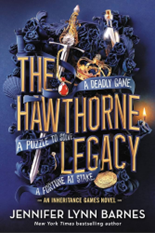
The Hawthorne Legacy by Jennifer Lynn Barnes
The Hawthorne legacy is the second book to the inheritance series and it was just as good as the first book. This book had gone more in depth into the real reason why Avery had been the one inheriting this so-called strangers’ things. But not only does it go more into the thriller part of the book, it also goes into the romance part as well. I haven’t finished the whole series yet but I do plan on reading the third book over summer and ending the series.
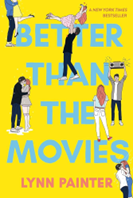
Better Than The Movies by Lynn Painter
Better than the movies was my first romcom type of read and I loved it so much. Before the beginning of each chapter it usually had a quote from a popular romcom movie and it was always fun reading them especially if I had watched the movie before. I loved reading about Liz and Wes, the main characters, going from childhood enemies, to friends, and finally, to lovers. The small romantic gestures were so sweet to read about and always kept a smile on my face while reading the book.

True Beauty by Yaongyi
True beauty was a really fun and entertaining graphic novel to read. I loved the drawings and the facial expressions of the characters when they had a minor convenience were always so funny to look at because their faces would get scrunched up. It was a really good book that gave me a small break from the traditional chapter books and was really easy to just breeze through but still enjoy the book at the same time.
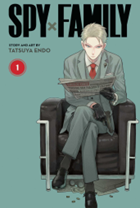
Spy X Family by Tatsuya Endo
Spy x Family was one of those books that I started because of other suggestions but ended up really liking it. I loved how all three characters seemed normal to each other but in reality had their own secrets. Learning about each characters secrets was a little shocking but always made me wonder if one of them would ever catch them in their secret. I did hope that they did find out since I thought it may actually benefit them rather than harm them. The book overall though was really interesting to read about but I did sometimes wish it had more color, but that might just be me since I like colorful books.
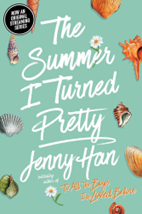
The Summer I Turned Pretty by Jenny Han
I read this book over summer during a road trip but it helped me pass time so quickly. Not because it kept me distracted but because I was so engaged in the book. I did originally start it because of the show but I am so glad I read the book first because it helped me take note of other details while watching the actual show. The book was definitely a really cute and romantic book to read and I loved reading about the rising romance between belly and the fisher brothers. I felt like reading this during the summer also made it a lot more fun for me to read as well.
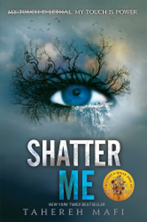
Shatter Me by Tahereh Mafi
Shatter me was one of the first dystopian books I had read and it ended up being a pretty entertaining book to read. At first it was a little hard for me to get into it cause I found it a little boring but eventually the more I had read it, the more I became interested. I did think the book would mainly just be a type of fantasy book and didn’t expect things like romance but there was a lot more of that than I thought. Reading the book in Juliet’s perspective really helped me get into the setting of the book and I really liked that. I do plan on reading the rest of the series before the year ends since the first book left a really good impression on me.
“My Top Ten Favorite Authors of 2023-24” by Anja K., 8th grade
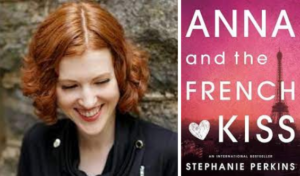
Stephanie Perkins
Stephanie Perkins is one of my all-time favorite authors that I will be talking about. She has written Anna and the French Kiss, Lola and the Boy Next Door, and Isla and the Happily Ever After. Anna and The French Kiss was one of my favorite books in 2023-2024. I loved how she wrote this book and how cute the romance was! I feel like the plot of this book was so adorable and I loved how she put the setting in Paris! Stephanie Perkins has a writing style that I love and will continue to read! She has a nice personality and she writes my favorite type of genre, which I love.
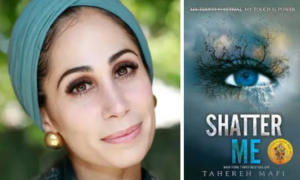
Tahereh Mafi
Ms. Mafi is an amazing writer who has created an all-time favorite series called Shatter Me. This is one of my FAVORITE series that I love and will continue to do. She has an amazing writing style and an amazing personality that thrives in her books. She puts so much emotion into all her books which makes me cry and have butterflies in my stomach. The Shatter Me series is filled with such emotion which thrives from book to book and was recommended by peers.

LambCat
LambCat is also one of my favorite authors. LambCat writes webtoons that are so entertaining including the Cursed Princess Club Series. This series looked very childish in my opinion but when I started reading it I got sucked into it and it became one of my all-time favorite webtoons that LambCat has created! I feel like LambCat is very likable because of the books they make and how their writing style is very cute and fun!

Yaongyi
Yaongyi is an amazing webtoon creator who wrote the True Beauty Series. The True Beauty series is really good and I recommend it to peers! It is a cute little webtoon that inspires us teenagers to be ourselves and not to worry about our appearance as much as we do now. Yaongyi teaches lessons in her books and that is why I love her books so much!

Alexis Castellanos
Alexis Castellanos is an amazing author who created a book called Isla to Island. This book is very inspiring because it is about a girl that is moving from a small city with no population to a big city which is New York City. She is taking care of random people who do not speak her language Spanish. Ms. Castellanos made this book very descriptive without any words in it that had a special meaning to it. She describes her books very beautifully and that’s why I love her so much!
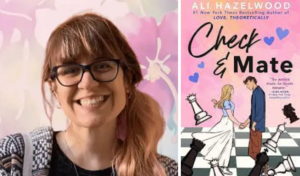
Ali Hazelwood
Ali Hazelwood is an author who creates Adult romance novels that are not age-appropriate for middle schoolers but came out with a Young Adult novel called Check & Mate. I read this and I thought it was so good for her first YA book I was really happy! I love how she wrote this book and explained the character’s feelings in the book and also how the book just flowed to how it ended. Her writing style IS TO DIE FOR I love how she wrote the book and how she expresses and makes every single one of her books so descriptive.
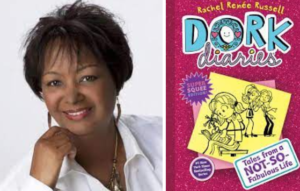
Rachel Renee Russell
Ms. Russell is another amazing author who wrote the Dork Diaries series and I LOVED this series when I was younger and still do to this day. I just love the concept of these books and how she wrote them is stunning. The main character Nikki always expresses her feelings about being bullied and not having such a fun time with her new school. But, her friends always push her through these situations and help her through tough times which is real friendship! 

Naoko Takeuchi
Ms. Takeuchi is the author of the Sailor Moon Series and is a series I read twice! That is how you know I loved it! Naoko Takeuchi is an author who took her time and dedication to create this beautiful series that is very viral in the Anime Community. Ms. Naoko is a very lovely and nice person who takes her time with fans to have individual conversations with them and makes them feel like they are family.
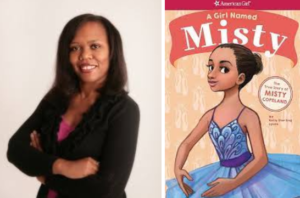
Kelly Starling Lyons
Ms. Lyons is another amazing author who created one of my all-time favorite American Girl children’s books called A Girl Named Misty. This book is very inspiring to me because as a ballerina Misty had to go through some terrible financial problems to be where she is today. She never quit being herself and fought to be a ballerina. Ms. Lyon is another one of my favorite authors because she writes inspiring stories of women to one day inspire children who read her books to work hard to complete their dreams one day.
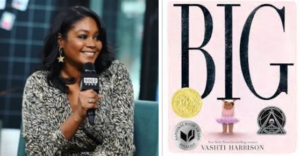
Vashti Harrison
I LOVE Vashti Harrison! She writes inspiring books such as Big. Big is about a little girl who is seen as a big ballerina in the world and wants to be smaller because of people making fun of her but then she learns to love herself and not get taken down just by words that people spread. This book is written beautifully for little children and the main theme of them is to never give up and to strive for greatness.
“10 Books for Readers Wanting Something New” by Caeden S., 8th grade
If you like mythology…
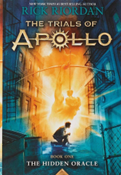
The Trials of Apollo (Specifically The Hidden Oracle) by Rick Riordan
(It might be a good idea to read Percy Jackson First)
The first book in this series is so cool! Taking a god, and putting him in a situation where he has no power, and is just a regular human being is such a cool scenario that I think reinvents some ideas created when Rick Riordan was writing Percy Jackson and The Heroes of Olympus (which are also extremely good series.) 10/10
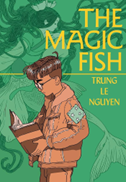
The Magic Fish by Trung Le Nguyen
Such a perfect book! Plot, Characters and topic! One of my favorite books about mythology I’ve ever read, and one of my favorite graphic novels I’ve ever read! 10/10
If you like action and adventure, but comedy too…
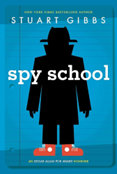
Spy School by Stuart Gibbs
This is easily one of my favorite book series I’ve read (even though at the time of writing this, I’m on the 5th book out of 11) the third book throws an absolute wrench into the story, and that’s why it’s interesting to read for something different. 20/10
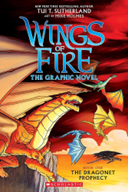
Wing of Fire: The graphic novel series by Tui. T Sutherland
This series has some comedy, not a lot, but some. And it delivers it so well, that it’s got me laughing a couple times. The graphic novel adaptation is also so well done, I love seeing the characters in an art style, so I don’t have to imagine what they look like. 9/10
If you’re a fan of romance…
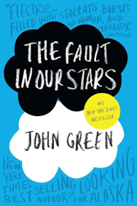
The Fault in Our Stars by John Green
John Green has to be one of my favorite romance novelists of all time, because dang, this book is good! Excellent romance tension when it’s needed, detailed writing, and overall an excellent way to write a romance novel that doesn’t read like a typical romance novel! 1000/10
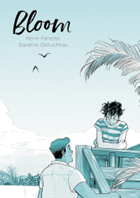
Bloom by Kevin Panetta
An actual masterpiece! 10/10 characters, art and plot. Everything is delivered so well, and I couldn’t ask for a better LGBTQ+ book. 1000/10
If you’re looking for an LGBTQ+ book…
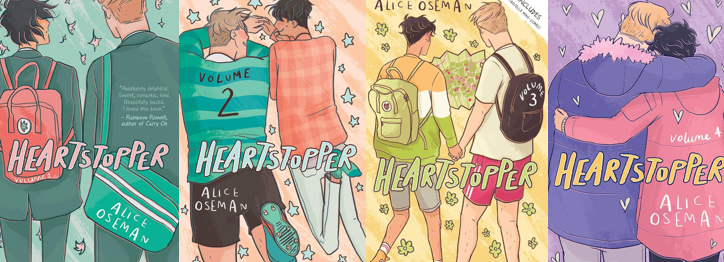
Heartstopper by Alice Oseman
There’s nothing I can say about this series besides the fact that it’s absolutely perfect! Perfect characters, perfect storyline, and perfect pacing! I can’t stop reading these masterpieces, and they take an interesting spin on the LGBTQ romance novels in my opinion. 2000/10
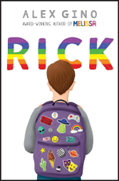
Rick by Alex Gino
Such a good way to introduce someone to LGBTQ! I loved the plot, and the character’s inner thoughts contribute so well to the overall plot. The characters are really well thought out. Such a good book. 10/10
If you’re looking for sports…
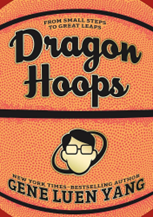
Dragon Hoops by Gene Luen Yang
You might think this book is all about basketball, but it’s not! The character (aka the actual author) writes the book so beautifully, and manages to tell a story about the history of basketball, the history of the school he works at, and about the author himself! 1000/10
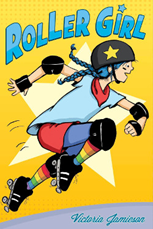
Roller Girl by Victoria Jamieson
One of the only sport books I’ve read that isn’t about a mainstream sport!
The internal struggle of the main character trying to push through the lessons because she wants to play, and also struggling in her own personal life is such a good way to write a book like this! 10/10
If you’re looking for some good graphic novels…
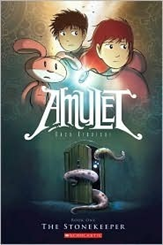
Amulet by Kazu Kibuishi
Such an amazing series! The final book is just indescribable in how detailed it is, and the top 5 greatest series I’ve read ever. 30/10
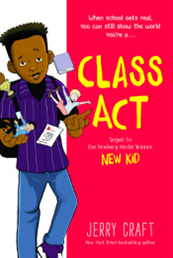
New Kid (But specifically Class act) by Jerry Craft
O.M.G. Literally the top #1 graphic novel I’ve ever read, and top 5 in greatest books. The plotline is something I never thought I’d see in graphic novel form, but here it is! 10000000000000/10
“Recommended Books” by Alena K., 8th grade
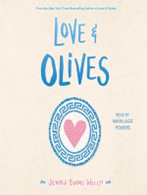
Love & Olives by Jenna Evans Welch
Liv Varanakis is a teenage girl about to graduate high school in hopes of becoming an artist. She has a happy life with her family Mom, Stepdad, and her younger brother. But she has dark thoughts about why her real dad left her. A few of her memories of her real dad were about trying to find Atlantis with her dad and trying to pinpoint where it could be. Back in the present day, she received a letter from her real dad urging her to come to Santorini, Greece to help him find Atlantis.
Opinion: Honestly, the plot is great. I like the world-building, it did feel like I was ‘in the book’. Reading this book only made me want to visit Greece even more.

Love & Gelato by Jenna Evans Welch
A high school student named Lina has to spend the summer in Italy for her mother’s dying wish. In Italy, she has to spend time with who seems to be her father, but as the book progresses the characters find out the truth about her actual father. With the help of her mother’s journal that her caretaker gifted her she could get to the truth faster.
Opinion: Again with the world building- BEAUTIFUL! It felt quite cool looking through the main character’s eyes in this book, having a great group of friends and everyone being happy that I was there.
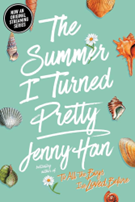
The Summer I Turned Pretty by Jenny Han
With every start of Summer break, Belly, and her family have a tradition of visiting her mom’s friend- Susannah at Cousins Beach. Susannah has two boys around Belly’s age (one of them being her crush). After years and years of crushing over one of Sussannah’s boys, she finally glows up.
Opinion: I read this back in the Summer of 2023, and it was the Perfect read to set me up for a long break of summer, the heat, the beaches, pools, and adventures!

To All the Boys I’ve Loved Before by Jenny Han
Lara Jean has a secret stash of love letters that she wrote for all of the boys she loved, only 5. Unexpectedly, all of them get sent away right when her big sister has to move out for her college. With all of the stress of having the letters sent away and keeping the house clean with her younger sister being in the way- there is Josh, her big sister’s ex and one of the boys she loved before.
Opinion: After reading this book I was left in shock. The BIGGEST plot twist happened right at the end of the book (not saying it was a bad thing), but it was unexpected.
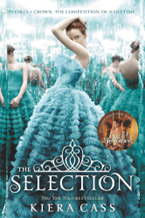
The Selection by Kiera Cass
A chance of a lifetime- The selection. Thirty-five girls are being selected to be the next new Queen to the throne of the kingdom where your rank means everything to your family. We meet our protagonist- America Singer. She was a part of the artist’s rank when she was forced to be enlisted by her family and then later to be picked up by the Selection. Will she survive the tension between the other thirty-five girls or snap immediately?
Opinion: When I first read this book, it was like I was translated into a life of celebrity (I kind of envied the main character but it’s whatever). A good and fast read deserves a ten out of ten.
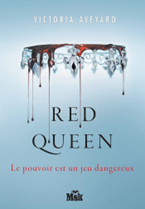
Red Queen by Aveyard Victoria
The whole world is divided by the color of your blood- red and silver. The red bloods were the peasants, meanwhile, silver bloods were a part of the royalty and had god-like powers too. Mare was a red blood, struggling to survive in the world, working through poverty and stealing. But finally, Mare had found a stable enough job as a maid in the silver palace! She finds that she is one of the silvers, but her blood is red… How could it be?
Opinion: This book has very fancy language but I could understand most of it. The characters were very easy to understand and their intentions.
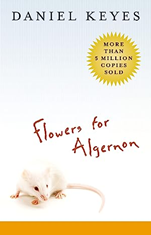
Flowers for Algernon by Keyes Daniel
Charlie Gordon is about to embark upon an unprecedented journey. Born with an unusually low IQ, he has been chosen as the perfect subject for an experimental surgery that researchers hope will increase his intelligence – a procedure that has already been highly successful when tested on a lab mouse named Algernon. As the treatment takes effect, Charlie’s intelligence expands until it surpasses that of the doctors who engineered his metamorphosis. The experiment appears to be a scientific breakthrough of paramount importance, until Algernon suddenly deteriorates. Will the same happen to Charlie?
Opinion: This book was recommended to me by my parents who read it back in their country… and let me tell you I WAS SOBBING BY THE END OF THIS BOOK.
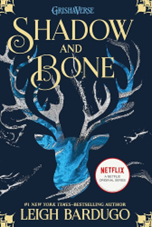
Shadow and Bone by Leigh Bardugo
An orphan named Alina Starkov. She is one of the most valuable people in Ravka because she is a Sun Summoner discovering her gift while crossing the Shadow Fold, filled with creatures beyond the human mind. She is the only person that can stop the Shadow Fold from spreading. But, it does require a lot of skill and practice to master such a gift as being able to summon light to her hands. Will she be able to beat the Shadow Fold and free Ravka?
Opinion: The world building is great and it was inspired by Russian culture, and it was a great feeling having something written about your culture and where you used to live. The hard part is memorizing the system and how it worked after getting side tracked by other books.

They Both Die at the End by Adam Silvera
It’s September 5th, on this day Mateo Torez and Rufus Emeterio might die. Death-Cast is a call that only lasts a few seconds but could change everything. Somehow people have found out how to predict the day you’ll die. Being lonely on such a day is no fun but an app called ‘Last Friends Inc.’ is where Rufus and Mateo met. They are hoping to get through the day and somehow not die in the process. Will they be able to do it, or just die like the rest is?
Opinion: A very sweet story about how love technically never dies. The most clever part about this book is- the cover! It has so many hidden secrets, like how Mateo’s and Rufus’ shadow looks like the grim reaper and how the skull looks like a skull. The author was even kind enough to put the relationship chart between the characters at the end of the book.
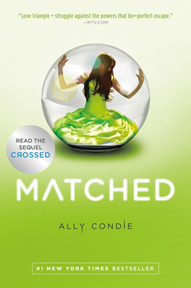
Matched by Ally Condie
In a dystopian society, a system was made- a Matching system. Where the 18-year-olds are taken to a nice mansion and have a system pair them up with another person who is psychologically compatible with them. There was rarely an instance where the matching system wouldn’t give someone their special somebody compatible with him. Cassie is the rare case, having no compatible person was her worst nightmare. At the last second, her match was made! She got matched with her best friend but before that, she could’ve sworn that someone else was matched with her. Now she is dreaded with the choice between perfection and desire. What will she choose?
Opinion: The book had a lot of moments where I would be at the edge of my seat trying to find out how it would continue! I was talking about the book so much, now my mom is reading the book!
Thank you so much to my student voices today and sharing their recommendations and favorites!

